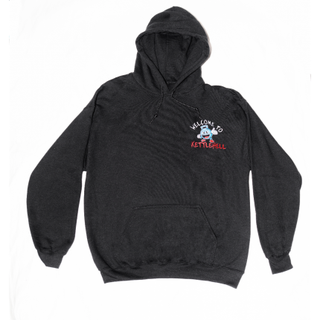Author, fitness model, and trainer Kirk Charles, NASM-CPT CES, knows that as you get older, life can get more complicated. But that shouldn’t prevent you from being on top of your game. He’ll help to answer the tough training questions that come with age so you too can be Fit Beyond 40.
Before I became a personal trainer, I never used kettlebells.
I considered the implements just another fancy fitness gadget, and inferior to dumbbells. That all changed once I took a kettlebell certification course. I found out how enjoyable and challenging a kettlebell workout can be. I also realized how many gym goers around me were using them in ill-advised ways and reinforcing bad form.
Men over 40 are no different than anyone else in the gym in many regards, but as a group, we can’t afford to make some of the mistakes we might have in our younger days. All physical movements come with some level of risk—but wildly swinging a kettlebell takes danger to a new level and greatly increases the odds of injury.

One of the first things you learn in a kettlebell certification course is how to hold the kettlebell in the front rack position. For the uninitiated, that might appear like you just pick it up by the horns and treat it like any other weight, but there’s more nuance involved to do it the right way. Holding the weight properly is important for older men because the position works your core and upper body much more than you would think, which can make your workouts more efficient and help you to reinforce healthy posture.
To set up, clean a kettlebell up to your shoulders (use just one weight to start). From that position, turn on your abs and glutes by squeezing them as tightly as possible. That will help to prevent arching your back and causing issues. A common mistake is to grip the kettlebells loosely with your wrists limp. The weights should be gripped tightly, with your wrists turned in. That will lock your wrists into place and force you to engage your forearms.

Another common mistake is flaring your elbow away from the body to set the kettlebells higher up on the shoulder, or simply cradling the weights in your elbow between the upper arms and forearms. That, combined with loose wrists and forearms, is a lazy position that deactivates your core and puts your wrists and shoulders at greater risk. Above all, the kettlebell rack is a position of work—never forget that. Your elbows should be turned down so your forearms are perpendicular to the floor, which will help lock in your shoulder stabilizers. Lastly squeeze your lats so your upper body is totally locked in.
From that powerful position, you’ll feel your upper body and core fully engaged. So, when you’re using the kettlebells for lower body work (i.e. lunges and squats), your upper body is engaged too. For older men front racking is critical to nail down, because maintaining solid posture is even more important as we age.
Start out with the front rack by holding a manageable weight in the position for 3 sets of 30 second holds, taking 30 seconds to rest. Once you feel comfortable, progress to marching in place with the weight in the rack position, driving your knees high. Once you own that, move forward to using the grip to load leg day movements like lunges, squats, and Bulgarian split squats.
Source: Read Full Article
